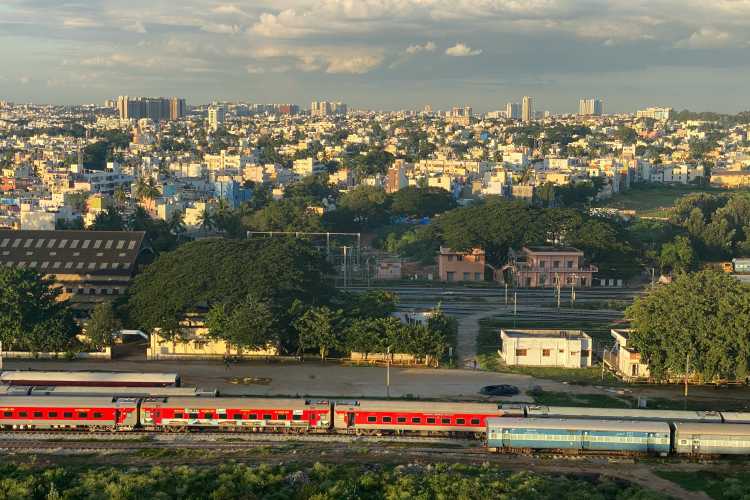
India’s ambition to become a global economic powerhouse hinges not just on its macroeconomic stability or vibrant population but also on the fiscal health and governance of its state economies. The Reserve Bank of India’s Handbook of Statistics on Indian States reveals that rising fiscal deficits across Indian states demands structural reforms and resource reallocation to sustain the country’s economic trajectory.
The fiscal deficits of Indian states paint a worrying picture. Twenty-three states and Union territories have reported a rise in fiscal deficits in FY24. Maharashtra leads with a staggering Rs 95,501 crore deficit, followed closely by Tamil Nadu and Uttar Pradesh. Even Delhi, despite its small size and high per capita income, saw its deficit more than double compared with the previous year.
READ | Mudra loans: India must rethink its MSME strategy
While some states such as Arunachal Pradesh, Bihar, and Assam have demonstrated fiscal discipline by reducing their deficits, the broader trend is alarming. Many state economies have exceeded the fiscal deficit-to-GSDP limit of 3% recommended by the 15th Finance Commission. States like Punjab, Kerala, and Rajasthan grapple with debt-to-GSDP ratios above 40%, raising concerns about their ability to sustain development spending.
Compounding the issue is a slowdown in capital expenditure. After a robust growth of 39.3% in FY24, state-level capital expenditure is projected to grow by only 6.5% in FY25. This fall in investment, particularly in infrastructure, health, and education, directly impacts economic growth and public service delivery.
State economies and structural challenges
The imbalance between revenue and expenditure is one of the major challenges states face. States bear 60% of the combined government expenditure, creating a structural deficit in state finances, leaving them heavily reliant on central transfers. At the same time, a significant portion of state revenues is spent on salaries, pensions, and interest payments, leaving limited room for development. Punjab’s debt crisis, for instance, is exacerbated by its high welfare spending and low revenue-generating capacity.
Despite substantial spending on education and health, outcomes remain sub-par, reflecting weaknesses in public spending efficiency. Governance deficits lead to inefficiencies, as spending decisions are often driven by political expediency rather than evidence-based outcomes. Moreover, India remains one of the most centralised countries in public expenditure, with states having limited fiscal autonomy. This restricts their ability to tailor economic strategies to local needs and stifles innovation in service delivery.
Empowering states for economic resilience
Addressing these challenges requires a state-led growth strategy that empowers states to lead their development trajectories. Fiscal decentralisation is key to enabling states to raise and allocate resources effectively. Revisiting the GST compensation mechanism and implementing state-specific fiscal rules can provide states with greater autonomy and flexibility. For example, allowing states to retain a larger share of GST revenues could alleviate fiscal stress and incentivise revenue mobilisation.
Equally important is improving public finance management. States must prioritise efficient public spending by enhancing transparency and accountability in budgetary processes, adopting technology-driven solutions to reduce leakages in welfare programs, and aligning expenditure with evidence-based outcomes. Public finance reforms should focus on outcomes rather than merely increasing budgets for sectors like education and health. Innovative approaches, such as performance-linked pay for teachers and healthcare workers, can improve outcomes without significant increases in spending.
Human development must be a central focus. States must channel resources into high-impact areas such as education, healthcare, and nutrition. Initiatives like Andhra Pradesh’s biometric smart cards for welfare schemes have demonstrated how technology can enhance efficiency and accountability. Investing in early childhood education and public health offers high social returns on investment, building a skilled and healthy workforce for future growth.
States need tailored growth strategies
India’s diversity necessitates customised growth strategies for each state. States like Tamil Nadu and Gujarat, with robust industrial bases, should focus on boosting manufacturing and infrastructure, while economically weaker states like Bihar and Uttar Pradesh must prioritise human capital development and governance reforms. Governance reforms are critical for bridging the gap between policy intent and outcomes.
Strengthening local institutions, increasing the capacity of public servants through training and performance-linked incentives, and ensuring regulatory oversight of private sector participation in public services are essential steps.
India’s central government must play a pivotal role by acting as a facilitator rather than a micromanager. Providing states with the necessary financial resources and policy support can empower them to innovate and lead. Revisiting the formula for resource allocation and ensuring equitable distribution based on states’ needs and performance will help strengthen fiscal federalism.
India’s economic success depends on the strength of its states. By addressing fiscal imbalances, enhancing governance, and prioritising human development, states can become engines of inclusive growth. A decentralised growth model, tailored to India’s diverse needs, is not just a necessity but an opportunity to unlock the country’s full economic potential.
The path forward lies in recognising that India’s prosperity is intricately linked to the financial and governance capabilities of its states. Only by empowering them can India achieve sustainable and equitable growth, ensuring that the benefits of development reach every citizen, not just a privileged few.
